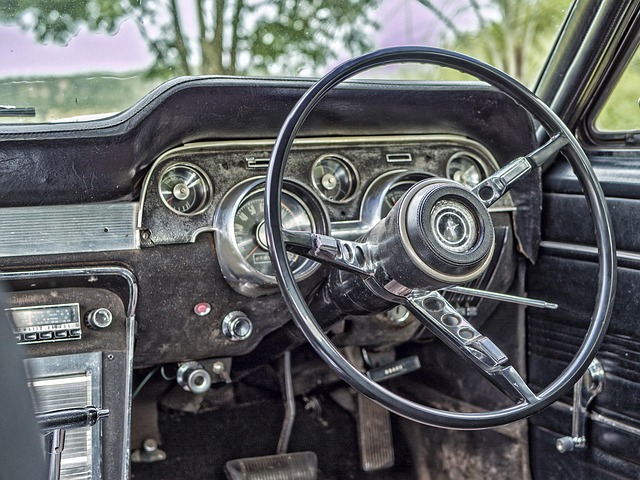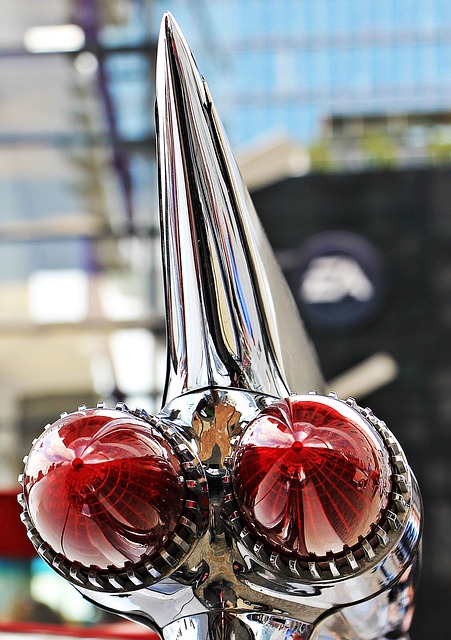Looking to register your car in California? This comprehensive guide breaks down the process step-by-step, from understanding crucial requirements to securing your unique vehicle identification number (VIN) verification. We’ll walk you through gathering essential documents, navigating the DMV, and paying registration fees. By following these clear instructions, you’ll be on your way to a seamless car registration experience in California. Don’t miss our key insights on dmv vin verification for a smooth process.
- Understand California Vehicle Registration Requirements
- Gather Necessary Documents for Car Registration
- Visit the DMV: Step-by-Step Process
- Perform VIN Verification: How and Why
- Pay Registration Fees and Receive Your Plate
Understand California Vehicle Registration Requirements

Before registering your car in California, it’s crucial to understand the state’s specific requirements. The California Department of Motor Vehicles (DMV) mandates that all vehicles operated within the state be properly registered and bear a valid license plate. This process involves several steps, including providing proof of insurance, completing necessary forms, and undergoing a Vehicle Identification Number (VIN) verification.
For convenience, many Californians opt for mobile VIN inspection or mobile VIN verification services. These services utilize specialized equipment to conduct a thorough VIN check, ensuring that the vehicle matches its reported information. By employing a mobile vin verifier, you streamline the registration process and avoid potential delays caused by traditional DMV visits.
Gather Necessary Documents for Car Registration

Before heading to the California Department of Motor Vehicles (DMV) for registration, ensure you have all the required documents ready. This process is designed to verify your vehicle’s authenticity and history, so having accurate information on hand is crucial. One key step in this preparation is completing a DMV VIN verification, which requires the Vehicle Identification Number (VIN) from your car’s registration certificate or title. You can also facilitate this process with a mobile VIN verification service, offering added convenience.
Additionally, gather important papers like your driver’s license, proof of insurance, and payment for registration fees. Some documents might be specific to certain situations, such as proof of ownership if the vehicle is not entirely yours. A thorough vin inspection can help ensure that all details match up, making the registration process smoother.
Visit the DMV: Step-by-Step Process

Visiting the DMV is a crucial step in registering your car in California. Here’s a simple breakdown of the process:
1. Gather Required Documents: Before heading to the DMV, make sure you have all essential documents like your driver’s license, proof of insurance, and vehicle registration (if from another state). You’ll also need your Vehicle Identification Number (VIN) for verification.
2. Conduct a DMV VIN Verification: This is a critical part of the process where the DMV checks your car’s history using its unique VIN. It ensures that the vehicle isn’t stolen, has no outstanding liens, and meets safety standards. You can facilitate this process with a mobile vin verifier or conduct a vin inspection yourself before visiting to streamline things at the DMV.
Perform VIN Verification: How and Why

Before registering your car in California, performing a Vehicle Identification Number (VIN) verification is a crucial step. This process involves checking the VIN’s accuracy and authenticity through a trusted source, such as the Department of Motor Vehicles (DMV) or a mobile vin verifier. By doing so, you ensure that the vehicle matches the details provided by its manufacturer.
A VIN inspection is essential to prevent fraud and protect both buyers and sellers. With a simple check using a mobile vin inspection tool, you can verify if the VIN is legitimate, ensuring that you’re dealing with an authentic vehicle. This step adds an extra layer of security during the registration process and helps maintain the integrity of California’s vehicle record system.
Pay Registration Fees and Receive Your Plate

After completing your vehicle’s inspection and ensuring all necessary repairs are made, it’s time to pay the registration fees. The California DMV offers several payment methods, including online, by mail, or in-person at a local field office. The cost of registration varies based on the type of vehicle and its age, so be sure to check the official DMV website for up-to-date pricing information.
Once your payment is processed, you’ll receive your license plate and official registration documents. For added convenience, you can opt for a mobile vin verification service to complete this process remotely. A mobile vin inspector will visit your location, perform a thorough vehicle inspection, and issue your plates on the spot. This option streamlines the registration process, saving you time and effort, especially if you’re unable to visit a DMV in person.
Registering a car in California is a straightforward process that requires understanding specific requirements and gathering essential documents. By following the steps outlined, including visiting the DMV and performing a VIN verification, you’ll be on your way to securing your vehicle’s registration promptly. Remember to keep your documentation up-to-date for seamless future renewals. When it comes to California car registration, knowledge is power—empowering you to navigate this crucial process with ease.
